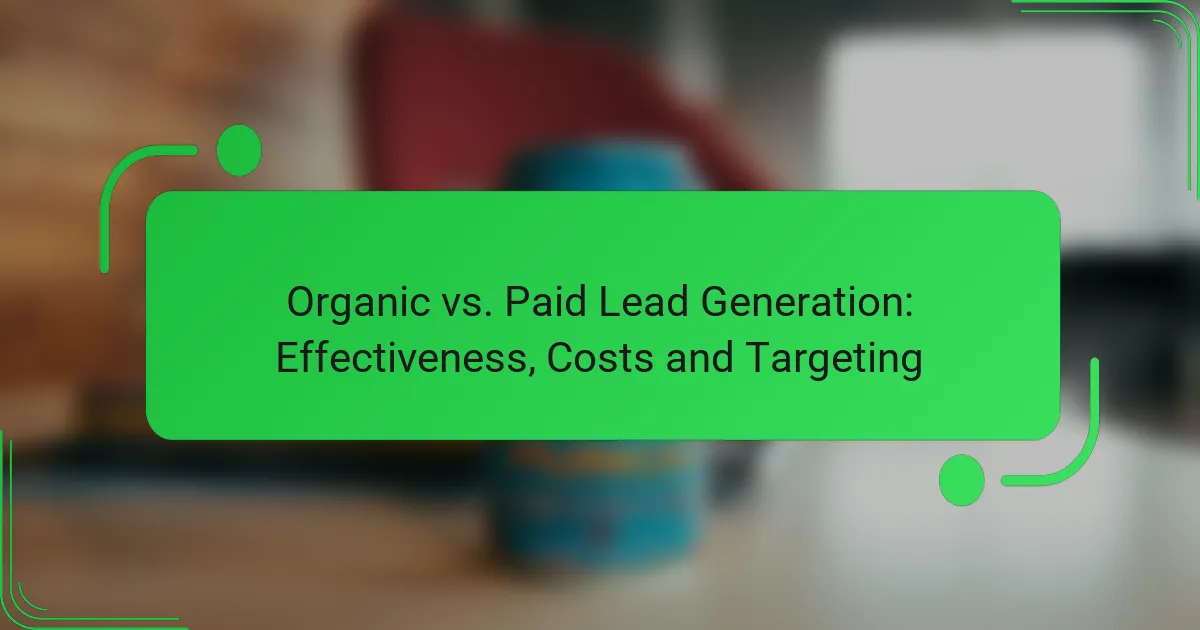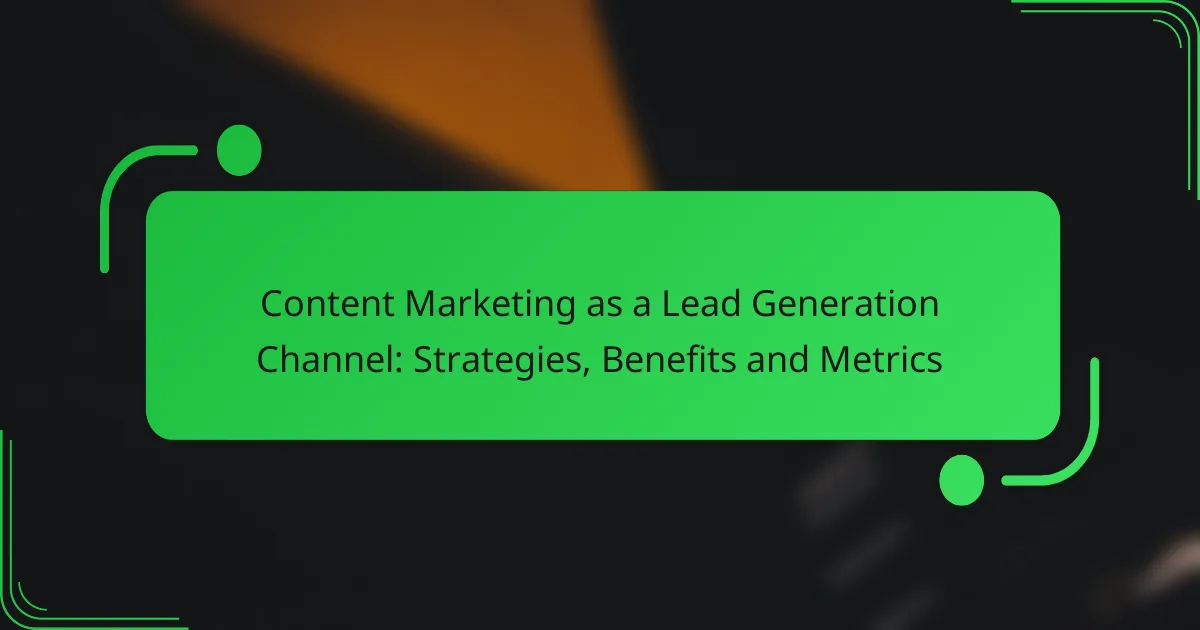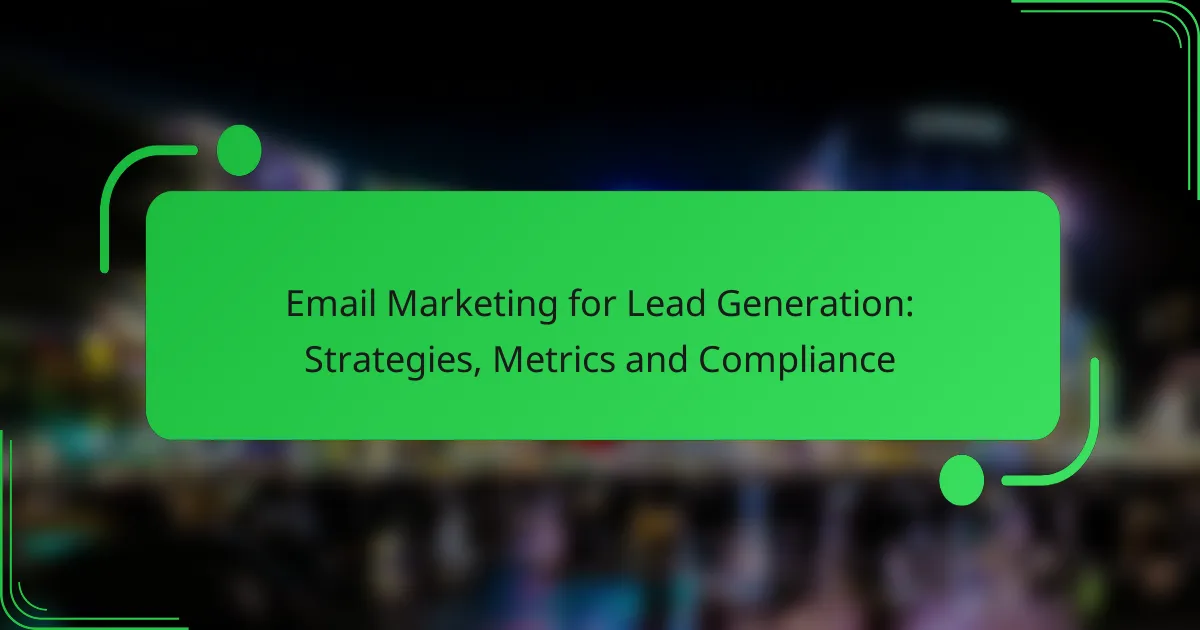In the competitive landscape of lead generation, businesses often weigh the benefits of organic versus paid strategies. Organic lead generation focuses on building trust and credibility through content marketing and SEO, while paid lead generation offers quick results and targeted outreach through online advertising. Understanding the effectiveness, costs, and targeting capabilities of each approach is essential for optimizing marketing efforts and achieving sustainable growth.

How effective is organic lead generation in Canada?
Organic lead generation in Canada is highly effective, leveraging content marketing, SEO, and social media to attract potential customers without direct payment for ads. This approach builds trust and credibility, leading to more meaningful interactions and conversions over time.
High engagement rates
Organic lead generation often results in higher engagement rates compared to paid methods. When users find valuable content, they are more likely to interact with it, share it, and return for more. This engagement fosters a community around your brand, enhancing loyalty and repeat visits.
For instance, a well-optimized blog post or informative video can generate discussions and shares, significantly increasing visibility and reach without additional costs.
Long-term sustainability
Organic lead generation offers long-term sustainability as it builds a solid foundation for ongoing traffic and leads. Unlike paid campaigns that cease to deliver results once funding stops, organic efforts continue to attract visitors over time. This creates a compounding effect where past efforts yield ongoing returns.
Investing in quality content and SEO can lead to a steady stream of leads, making it a more reliable strategy for businesses looking to grow sustainably in the Canadian market.
Cost-effectiveness over time
While organic lead generation may require an initial investment in content creation and optimization, it tends to be more cost-effective in the long run. The ongoing costs are generally lower than continuous paid advertising, which can quickly add up.
For example, once a blog post ranks well, it can drive traffic for months or even years without additional costs, whereas paid ads require constant funding to maintain visibility. This makes organic strategies particularly appealing for small to medium-sized businesses in Canada looking to maximize their marketing budgets.
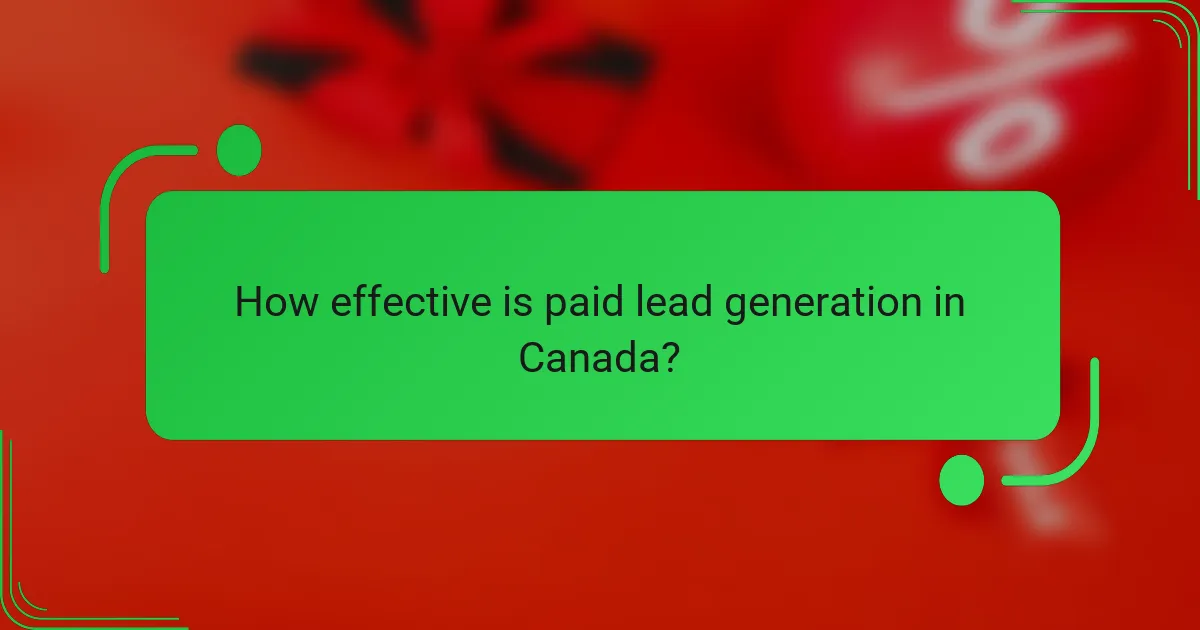
How effective is paid lead generation in Canada?
Paid lead generation in Canada can be highly effective, delivering quick results and targeted outreach. By leveraging various online platforms, businesses can attract potential customers more efficiently compared to organic methods.
Immediate results
Paid lead generation offers immediate visibility and quick returns on investment. Once a campaign is launched, businesses can see leads coming in within hours or days, depending on the platform used.
For example, using Google Ads or Facebook Ads can generate leads almost instantly, allowing businesses to capitalize on current trends or promotions. This rapid response can be crucial for time-sensitive offers.
Targeted audience reach
Paid lead generation allows for precise targeting of specific demographics, interests, and behaviors. Advertisers can tailor their campaigns to reach potential customers based on factors such as age, location, and online activity.
In Canada, platforms like LinkedIn and Facebook provide robust targeting options, enabling businesses to connect with niche markets effectively. This targeted approach often results in higher conversion rates compared to broader, organic strategies.
Scalability of campaigns
Paid lead generation campaigns are easily scalable, allowing businesses to adjust their budgets and reach as needed. Companies can start with a modest investment and gradually increase spending as they see positive results.
For instance, a small business can begin with a few hundred Canadian dollars per month and scale up to thousands as they refine their targeting and messaging. This flexibility makes it easier to adapt to changing market conditions or business goals.
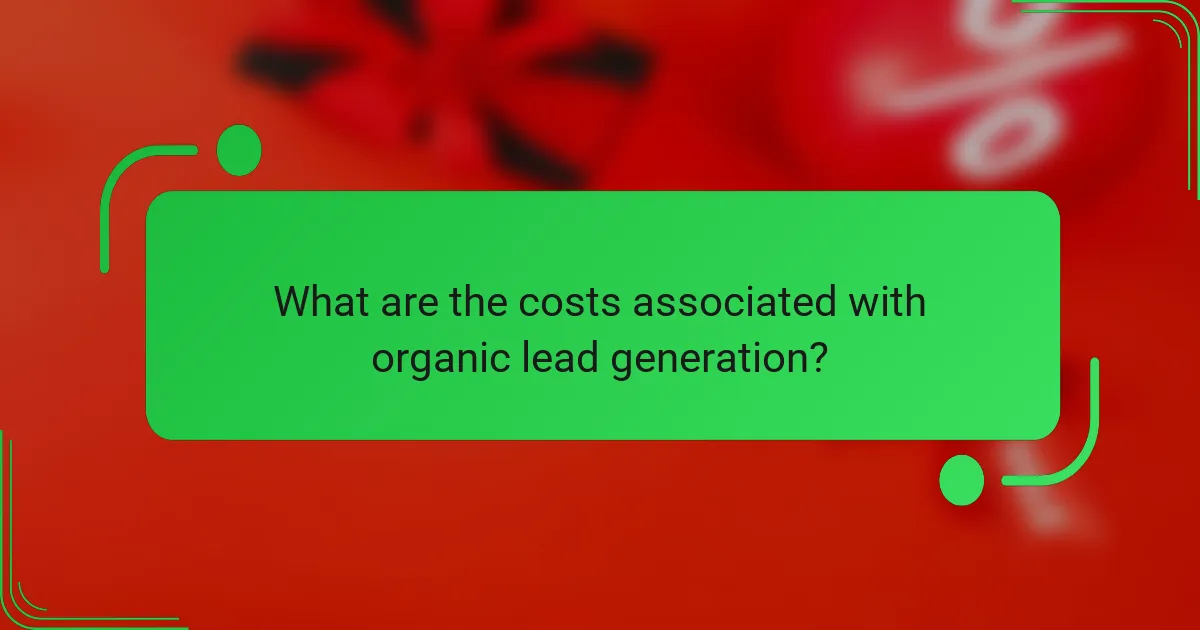
What are the costs associated with organic lead generation?
The costs of organic lead generation primarily involve time and resources invested in creating quality content and optimizing for search engines. Unlike paid methods, organic lead generation does not require direct financial outlay for ads, but it demands a commitment to ongoing content development and SEO efforts.
Lower upfront costs
Organic lead generation typically has lower upfront costs compared to paid advertising. There are no fees for clicks or impressions, making it a budget-friendly option for businesses, especially startups. However, while the initial monetary investment may be minimal, the costs manifest in time and effort to build a robust online presence.
For example, businesses can leverage existing resources, such as in-house content creators or social media platforms, to generate leads without significant financial investment. This approach allows companies to allocate funds to other areas, like product development or customer service.
Investment in content creation
Investing in content creation is crucial for effective organic lead generation. High-quality, relevant content attracts visitors and encourages engagement, which can lead to conversions. This investment can include hiring writers, graphic designers, or video producers, depending on the content strategy.
Businesses should consider a content calendar that outlines topics, formats, and publishing schedules. Regularly updating content not only keeps the audience engaged but also improves search engine rankings, leading to sustained lead generation over time.
Time commitment for SEO
Organic lead generation requires a significant time commitment for search engine optimization (SEO). Achieving high rankings in search results does not happen overnight; it often takes months of consistent effort. This includes keyword research, on-page optimization, and building backlinks.
To maximize effectiveness, businesses should allocate time for monitoring performance metrics and adjusting strategies based on analytics. Regularly reviewing SEO efforts ensures that the content remains relevant and competitive in search results, ultimately enhancing lead generation potential.

What are the costs associated with paid lead generation?
Paid lead generation involves various costs that can significantly impact your marketing budget. These costs typically include initial investments for setting up campaigns, ongoing expenses for ad placements, and metrics that help gauge effectiveness.
Higher initial investment
When launching a paid lead generation campaign, businesses often face a higher initial investment compared to organic methods. This investment may cover creative development, landing page optimization, and the setup of tracking tools. Depending on the complexity, initial costs can range from a few hundred to several thousand dollars.
It’s crucial to allocate sufficient resources upfront to ensure that your campaigns are well-structured and capable of attracting quality leads. Poorly executed initial investments can lead to wasted ad spend and ineffective campaigns.
Ongoing ad spend
Ongoing ad spend is a continuous cost associated with paid lead generation. This includes daily or monthly budgets allocated for platforms like Google Ads or Facebook Ads. Depending on your industry and competition, monthly ad budgets can vary widely, often falling between a few hundred to several thousand dollars.
To manage ongoing costs effectively, set clear goals and regularly analyze campaign performance. Adjust your budget based on which ads yield the best return on investment to optimize your spending.
Cost per click metrics
Cost per click (CPC) is a critical metric in paid lead generation that indicates how much you pay for each click on your ad. CPC can vary significantly based on factors such as industry competition, keywords, and ad quality. Typical CPC rates can range from low cents to several dollars.
Monitoring CPC is essential for evaluating the efficiency of your ad spend. Aim to lower your CPC by improving ad relevance and targeting, which can lead to higher conversion rates and better overall campaign performance.
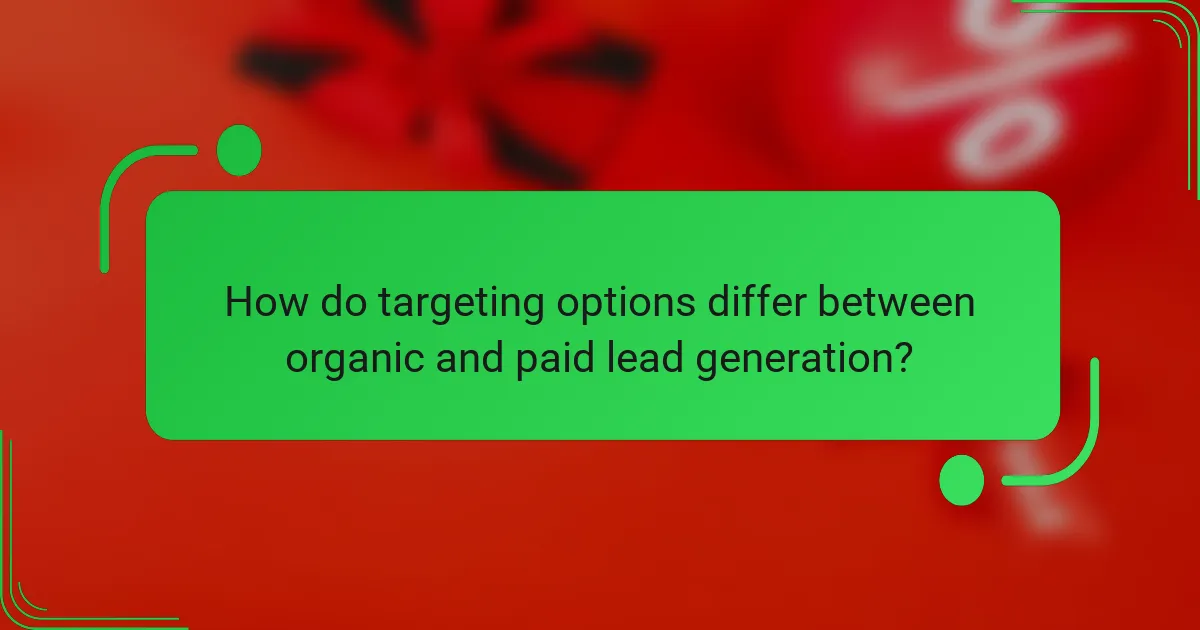
How do targeting options differ between organic and paid lead generation?
Targeting options for organic and paid lead generation vary significantly in approach and effectiveness. Organic lead generation relies on search engine optimization (SEO) to attract users based on their search intent, while paid lead generation utilizes pay-per-click (PPC) advertising to reach specific demographics and interests.
SEO targeting based on keywords
SEO targeting focuses on optimizing content for specific keywords that potential leads are searching for. By conducting keyword research, businesses can identify high-traffic terms relevant to their products or services, allowing them to create content that ranks well in search engine results.
Effective SEO targeting requires ongoing analysis and adjustment, as search trends can shift. Businesses should aim for a mix of short-tail and long-tail keywords to capture both broad and niche audiences. For instance, a company selling organic skincare might target “organic skincare” as a short-tail keyword and “best organic moisturizer for sensitive skin” as a long-tail keyword.
PPC targeting based on demographics
PPC targeting allows businesses to reach specific demographics through detailed audience segmentation. Advertisers can define their target audience based on factors such as age, gender, location, interests, and online behavior, ensuring their ads are shown to the most relevant users.
When setting up PPC campaigns, it’s crucial to monitor performance metrics and adjust targeting settings accordingly. For example, a local coffee shop might target users within a 10-mile radius who are aged 18-35 and have shown interest in coffee-related content. This focused approach can lead to higher conversion rates and a better return on investment.
